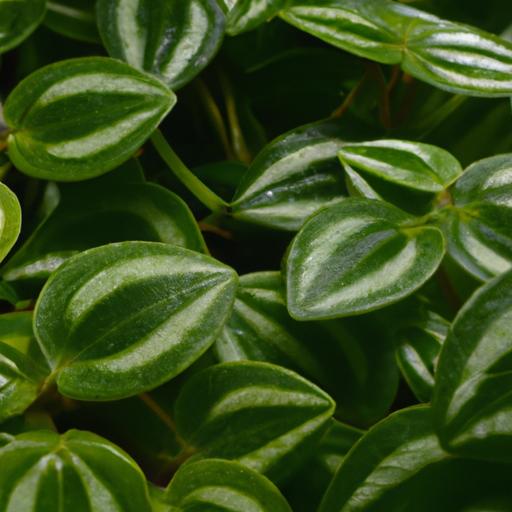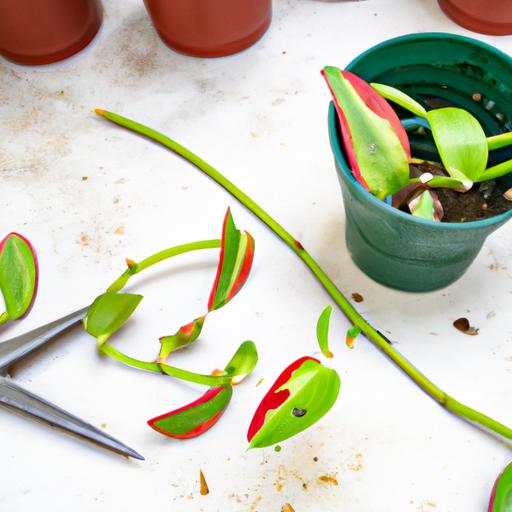Learn how to successfully propagate parallel peperomia through stem and leaf cutting methods. A comprehensive guide for parallel peperomia propagation.
Introduction
Welcome to Rowe Organic, your green sanctuary for expert tips and inspiration in organic gardening. In this article, we will delve into the fascinating world of parallel peperomia propagation. Are you ready to learn how to propagate and expand your collection of these beautiful plants? Let’s get started!

Understanding Parallel Peperomia Propagation
What is Parallel Peperomia?
Parallel peperomia, scientifically known as Peperomia puteolata, is a stunning houseplant characterized by its vibrant green leaves adorned with striking silver parallel stripes. This variety of peperomia is highly sought after for its unique foliage, making it a popular choice among plant enthusiasts.
Different Methods of Propagating Parallel Peperomia
When it comes to parallel peperomia propagation, there are primarily two methods that yield successful results: stem cutting and leaf cutting.
-
Stem Cutting:
Stem cutting involves taking a healthy stem from a mature parallel peperomia plant and encouraging it to root and grow into a new individual. This method is particularly effective due to the plant’s natural ability to develop roots from stem nodes. -
Leaf Cutting:
Leaf cutting is another viable method to propagate parallel peperomia. It involves carefully selecting a healthy leaf and encouraging it to produce roots and eventually develop into a new plant. While this method requires a bit more patience, it can be a rewarding way to expand your parallel peperomia collection.
Factors Affecting Successful Propagation
To ensure successful propagation of parallel peperomia, it is essential to consider and provide optimal conditions for the plants. Factors that significantly impact the success rate include:
-
Light and Temperature Requirements:
Parallel peperomia thrives in bright, indirect light. Placing the parent plant and newly propagated cuttings in a location with adequate light is crucial for their growth. Additionally, maintaining a temperature range of 65-75°F (18-24°C) provides the ideal environment for successful propagation. -
Soil and Watering Needs:
Parallel peperomia prefers well-draining soil that retains moisture without becoming waterlogged. Using a mixture of peat moss, perlite, and sand can create an ideal growing medium. Proper watering techniques, allowing the soil to dry slightly between waterings, will prevent overwatering and root rot.

Step-by-Step Guide to Parallel Peperomia Propagation
Now that we understand the basics, let’s dive into the step-by-step process of propagating parallel peperomia:
Preparing the Materials
Before you begin propagation, gather the necessary materials:
- Sharp, sterilized pruning shears
- Clean containers with drainage holes
- High-quality potting mix or a peat moss, perlite, and sand mixture
- Rooting hormone (optional but recommended)
- A clean, soft brush for applying rooting hormone (if using)
Selecting Healthy Parent Plants
Choose healthy, mature parallel peperomia plants as your parent plants for propagation. Look for plants that exhibit vigorous growth, have no signs of disease or pests, and showcase the desired characteristics you wish to propagate.
Stem Cutting Propagation Process
-
Cutting Technique:
Select a healthy stem with at least two sets of leaves. Using sterilized pruning shears, make a clean cut just below a node (the point where leaves emerge from the stem). Ensure the cutting is around 3-4 inches (7-10 cm) in length. -
Rooting Hormone Application:
While optional, applying rooting hormone to the cut end of the stem can significantly increase the chances of successful root development. Dip the cut end into rooting hormone powder or use a brush to apply the liquid form. -
Planting and Care Instructions:
Plant the stem cutting in a container filled with moist potting mix or the recommended peat moss, perlite, and sand mixture. Insert the cutting about an inch (2.5 cm) into the soil, ensuring at least one set of leaves remains above the surface. Place the container in a bright, indirect light location and maintain consistent moisture by lightly watering when the top inch (2.5 cm) of soil dries out.
Leaf Cutting Propagation Process
-
Leaf Selection and Preparation:
Choose a healthy, fully mature leaf from the parent plant. Gently remove the leaf from the stem, ensuring a clean break without damaging the leaf or stem. If the leaf is large, you can cut it into smaller sections, each containing a visible vein. -
Leaf Placement for Rooting:
Lay the leaf or leaf sections on top of moist potting mix or the recommended peat moss, perlite, and sand mixture. Press them lightly into the soil, ensuring the veins make contact with the soil. It’s important to note that the leaf itself will not produce roots, but rather new plants will develop from the leaf sections. -
Caring for Leaf Cuttings During Propagation:
Place the container in a warm location with bright, indirect light. Covering the container with a plastic bag or using a propagation tray can help maintain humidity levels. Mist the leaf cuttings occasionally to keep them moist but avoid overwatering. New plants should emerge from the leaf sections within a few weeks to a couple of months.
Frequently Asked Questions (FAQ) about Parallel Peperomia Propagation
Can parallel peperomia be propagated through division?
While parallel peperomia can be propagated through division, it is not the recommended method. The plant’s compact and delicate root system can be easily damaged during division, resulting in poor survival rates. Stem and leaf cutting propagation are the preferred methods for successful parallel peperomia propagation.
How long does it take for parallel peperomia cuttings to root?
The rooting time for parallel peperomia cuttings can vary depending on various factors such as temperature, light, and overall care. On average, stem cuttings can take around 4-6 weeks to develop roots, while leaf cuttings may take slightly longer, generally between 6-8 weeks.
What are common challenges in parallel peperomia propagation?
Common challenges in parallel peperomia propagation include overwatering, inadequate light, and improper temperature conditions. It’s essential to strike a balance between providing sufficient moisture without allowing the soil to become waterlogged. Additionally, ensuring the plants receive adequate bright, indirect light and maintaining proper temperature ranges greatly contribute to successful propagation.
Can I propagate parallel peperomia in water?
While some plants can be propagated in water, parallel peperomia is not well-suited for water propagation. This method often leads to rotting of the cuttings and a decreased chance of successful rooting. It is best to propagate parallel peperomia using the recommended soil-based methods.
How often should I water the newly propagated plants?
When it comes to watering newly propagated parallel peperomia plants, it is important to strike a balance. Allow the top inch (2.5 cm) of soil to dry out between waterings, then water thoroughly until the excess drains out of the container’s drainage holes. Avoid overwatering, as it can lead to root rot and other issues.
Conclusion
Congratulations! You have now learned the ins and outs of parallel peperomia propagation. By following the step-by-step guide and considering the key factors for success, you can expand your collection of these stunning plants. Remember to be patient and provide the optimal conditions for your newly propagated parallel peperomia. Happy gardening!
At Rowe Organic, we are dedicated to providing expert tips and inspiration in organic gardening. Cultivate, nurture, and grow naturally. Join us on this green journey and explore more houseplant care guides and organic gardening tips on our website.
Visit Rowe Organic for more information on houseplants and organic gardening.
